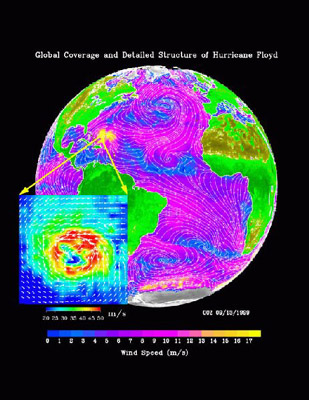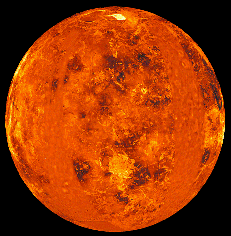



|

|

|
| Next Lecture | Last Lecture | UWS | Physics Dept |
| Planet | Probes/Explorers |
|---|---|
| Mercury | Mariner 10(1974) |
| Venus | Mariner 10, Venera 7, Magellan |
| Mars | Viking, Mars Pathfinder Mars Science Laboratory mission and its Curiosity rover |
| Jupiter | Voyagers+ Galileo |
| Saturn | Voyager I+II , Cassini-Huygens |
| Uranus | Voyager II |
| Neptune | Voyager II |
It is useful to see how some of the earths features appear from space
We have some pictures of Mercury's moon-like surface
| Planet | Sidereal period | Synodic Period |
|---|---|---|
| Mercury | 57 days | 115 days |
| Earth | 23.935 hours | 24 hours |
Venus |

|
Venus is, superficially, very similar to Earth. It is 0.72 A.U. from
the sun
so we would expect it to be a warmer than earth. It is about Earth
sized and appears to be covered in clouds. (Again not a great
telescope object). Its cloud cover is highly reflective making it the
brightest sky object after the sun and moon. It is difficuly to see
any features other than ``phases'' with a telescope. Most info. hence
comes from probes.
It is thought that Venus is very hot due to a Greenhouse Effect caused by the CO2 in the thick cloud layers. Venus does not look pleasant for life! Some images mostly taken by the Magellan space probe which orbited above the clounds and used infra red imaging to ``see'' the surface are
|

Known as the red planet. Surface features visable through telescope. (No canals!!!!) Rather smaller than Earth and further away fom the sun. Surface conditions look very much like a desert
Some images of Mars from a variety of sources
© Dave Dunbar 2020